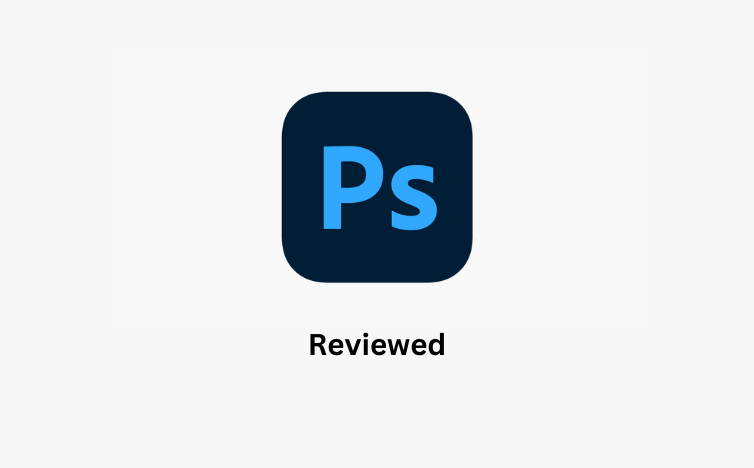Adobe Photoshop has been a staple in the toolkit of graphic designers, photographers, and creative professionals for decades. Its continuous innovations have kept it at the forefront of image editing software, with its AI tools now playing a pivotal role in maintaining its unmatched reputation. Here’s a detailed Adobe Photoshop review.
Table of Contents
A Tradition of Excellence
First, let’s acknowledge the foundation of Photoshop’s success. With its robust suite of features and intuitive interface, Adobe Photoshop has long set the standard in the industry. Its flexibility supports everything from basic photo retouching to complex digital illustrations, empowering creative professionals to bring their visions to life.
Why AI Tools Matter
In recent years, AI has become an integral part of software development, and Photoshop is no exception. The integration of AI tools into Adobe Photoshop not only enhances the user experience but also significantly boosts productivity and creativity.
How to Access AI Features in Photoshop
To utilize AI capabilities in Photoshop, you need to ensure you have the correct version of the software. Adobe integrates AI through a feature called Adobe Sensei, which drives many of its advanced tools.
- Update to the Latest Version of Photoshop
AI features are found in the most recent versions of Photoshop offered through Adobe Creative Cloud. To use them, make sure your software is up to date. Adobe regularly releases updates, so it’s essential to keep your software current. - Log into Your Adobe Account
If you already have a Creative Cloud subscription, all you need to do is log into your Adobe account. Open the Creative Cloud app, check for any updates, and install the latest version of Photoshop. - Check for AI Features
After updating, go to the “Help” menu in Photoshop and select “About Photoshop” to confirm you have the most recent version. The AI technology known as Adobe Sensei will be included in this updated version.
Top Features Of Abobe Photoshop
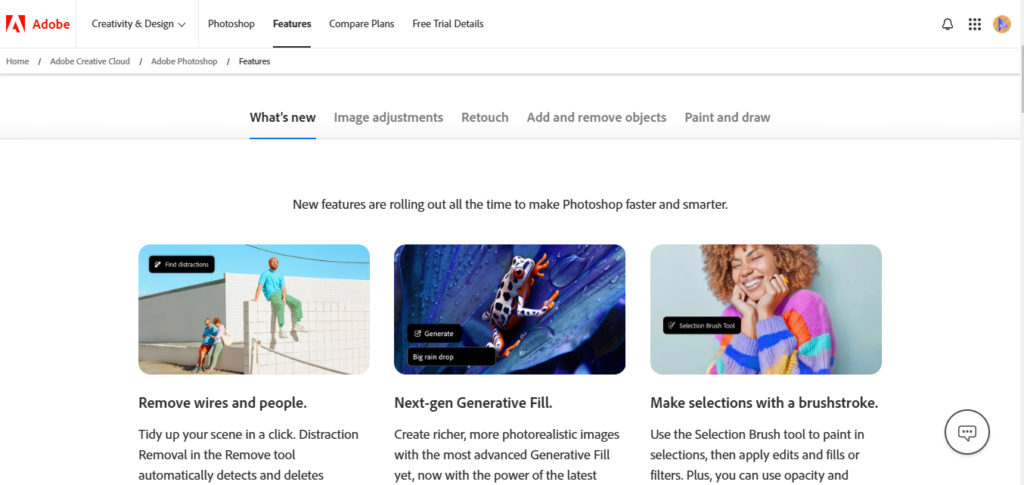
1. Powerful Image Editing & Manipulation Tools
- Photoshop has strong tools for changing and adjusting images in detail. This includes:
- Layers: Edit parts of an image separately without affecting the rest.
- Smart Objects: Make changes without losing the original quality.
- Content-Aware Fill: Easily remove things from a picture, and Photoshop fills the space to match.
- Warp and Transform: Adjust or reshape images to create different looks.
2. Photo Editing & Enhancement
- Tools for fixing and improving photos:
- Brightness and Contrast: Adjust how light or dark an image is.
- Color Adjustments: Fine-tune colors to look natural or add creative effects.
- Sharpening and Noise Reduction: Make images clearer and less grainy.
- Healing Brush: Remove blemishes or fix imperfections in a photo.
- Lens Correction: Fix problems caused by camera lenses.
See Also: 9 Best AI Tools For Photo Editing
3. Graphic Design Features
- Useful for making things like posters, flyers, and logos:
- Text Tools: Add and style text in many ways.
- Shapes and Vector Graphics: Draw shapes and design graphics with precision.
- Custom Brushes: Create unique patterns and effects.
- Blending Modes: Combine images in different ways for creative effects.
4. Digital Painting & Drawing
- Great for artists who want to draw or paint digitally:
- Brush Engine: A wide selection of brushes to create realistic or artistic effects.
- Pressure Sensitivity: Works with drawing tablets for more natural strokes.
- Blending Tools: Mix colors like you would with real paint.
5. Video Editing Features
- Basic tools for working with video:
- Timeline Panel: Edit videos, create simple animations, or make GIFs.
- Frame-by-Frame Animation: Animate images for creative projects.
- Video Layers: Add text, filters, and effects to videos.
See Also: 11 Best AI Tools For Video Generator
6. Web & UI Design
- Helpful for designing websites or app interfaces:
- Artboards: Design multiple screens in one project.
- Guides and Grids: Keep elements aligned neatly.
- Export Options: Save images optimized for the web.
7. AI Tools
- Content-Aware Fill:
Photoshop’s Content-Aware Fill has been revolutionized by AI. This tool allows you to remove unwanted elements from your images seamlessly. Using AI, it smartly fills in the gaps by analyzing surrounding pixels to create a natural-looking result.
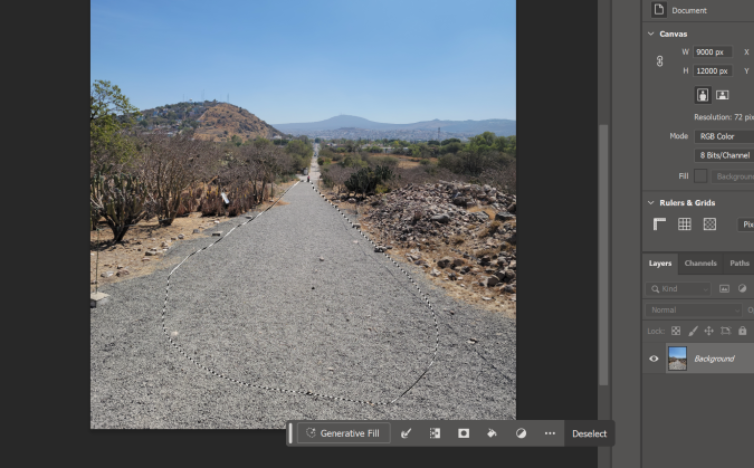
- Neural Filters:
Neural Filters offer non-destructive editing options that can transform portraits and landscapes with just a few clicks. These AI-driven filters enable users to change expressions, age, gaze direction, and even apply artistic styles effortlessly.

- Sky Replacement:
AI powers the Sky Replacement feature, which enables users to dramatically alter the mood of an image by swapping out skies. The software automatically adjusts the foreground colors to match the new sky, achieving a cohesive look.
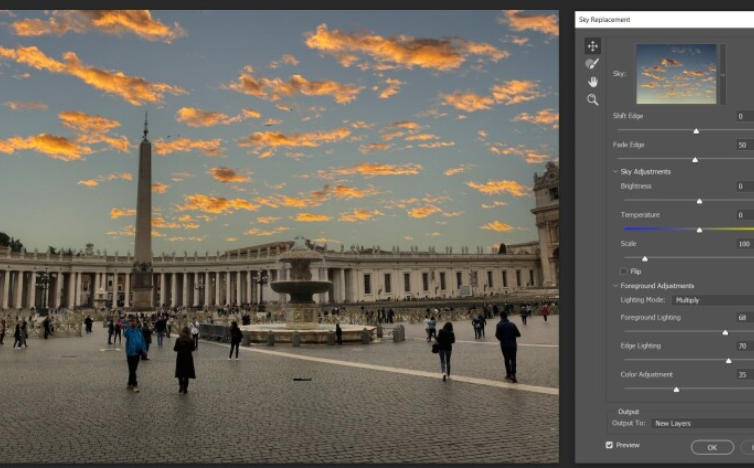
- Select Subject and Object Selection:
These tools utilize AI to make complex selections with precision. Whether you’re isolating a subject from a busy background or selecting intricate objects, AI helps streamline the process significantly compared to manual selection techniques.
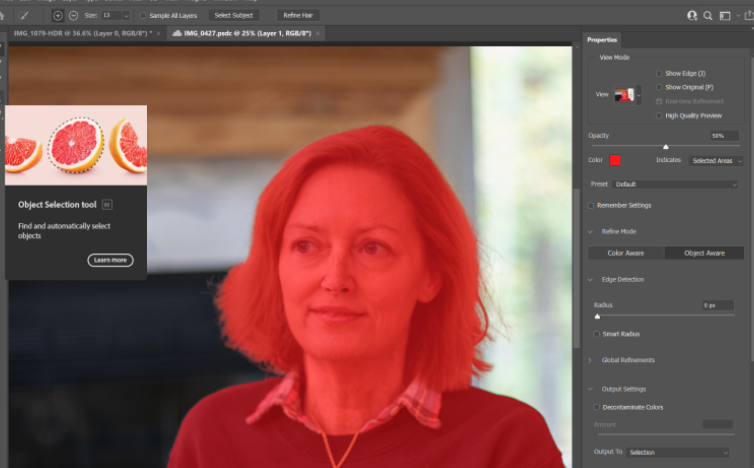
8. Automation
- Saves time by handling repetitive tasks:
- Actions: Record steps and apply them to other images with one click.
- Batch Processing: Edit many images at once.
- Scripting: Automate complex tasks with scripts.
9. Integration with Adobe Apps
- Works well with other Adobe software:
- Adobe Illustrator: Move designs between Photoshop and Illustrator easily.
- Adobe Lightroom: Edit photos in Lightroom and do detailed edits in Photoshop.
- Adobe After Effects: Use Photoshop files in animation projects.
10. Cloud Syncing & Collaboration Features
- Makes working and sharing easier:
- Creative Cloud: Sync your work across devices and access it anywhere.
- Cloud Documents: Save and share projects for collaboration.
- Libraries: Store and access colors, fonts, and design assets across projects.
These features make Photoshop a powerful tool for photographers, designers, and digital artists.
What Makes Adobe Photoshop Special?
Adobe Photoshop is special because it has a wide range of tools for all kinds of image editing. It works well with other Adobe software and third-party apps, making it useful for professionals. The latest AI features in Photoshop expand creative possibilities, turning it into a powerful platform for digital art and design.
The Impact on Creative Professionals
For graphic designers, photographers, and other creative professionals, these AI tools are game-changers. They reduce the time spent on tedious tasks, allowing for more focus on the creative aspects of projects. This efficiency not only enhances productivity but also opens up new possibilities for creativity.
Continuous Innovation
Adobe’s commitment to innovation ensures that Photoshop evolves alongside the needs of its users. Regular updates are packed with new AI features and improvements that keep the software ahead of competitors. This proactive approach to development assures users that they are equipped with cutting-edge tools.
Pros and Cons of Adobe Photoshop
Who Is Adobe Photoshop Good For?
Adobe Photoshop is great for:
- Photographers: To edit, retouch, and combine photos professionally.
- Graphic Designers: To make digital artwork and design projects like posters or logos.
- Digital Artists: For creating detailed drawings and creative digital paintings.
- Web Designers: To design website layouts and create graphics for online use.
- Marketing Professionals: To make social media posts, ads, and other marketing images.
- Content Creators: To design eye-catching images, video thumbnails, or graphics for blogs.
- Architects and Product Designers: To create realistic images of buildings or products.
- Motion Graphics Artists: To make visuals for animations or videos.
Photoshop works well for people who need powerful tools for photo and image editing. If you only need simple edits, other easier tools might work better.
See Also: 9 Best AI Tools for Image Generation
How Adobe Photoshop’s AI Tools Work
Adobe Photoshop’s AI tools leverage machine learning algorithms to analyze images and perform complex edits that would otherwise be time-consuming and labor-intensive. These algorithms are trained on vast datasets, enabling them to detect patterns, recognize features, and make intelligent decisions when applying edits. For example, the Content-Aware Fill tool examines surrounding pixels to seamlessly fill in gaps left by removed objects, while Neural Filters utilize deep learning to alter expressions or apply artistic styles. This process involves training neural networks to understand various attributes of images, which Photoshop then uses to deliver enhancements with precision and consistency. By harnessing the power of AI, Photoshop transforms the way users approach editing, providing a toolset that evolves with each update to address emerging creative challenges.
How to Use Adobe Photoshop Step by Step
Using Adobe Photoshop can greatly enhance your editing workflow. Here’s a step-by-step guide on how to use some of these powerful features:
Step 1: Download Photoshop
If you already have Adobe Photoshop installed on your computer, that’s great! If not, the easiest way to get Photoshop is to visit the Adobe Photoshop landing page and choose “Free trial” or “Buy now.” You can try Photoshop for free for seven days and cancel whenever you want!
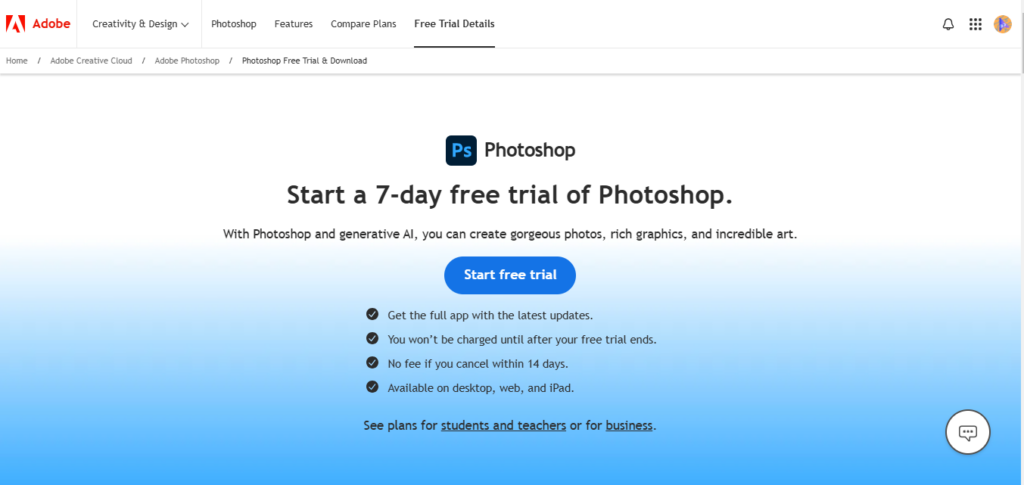
Step 2: Create a New File
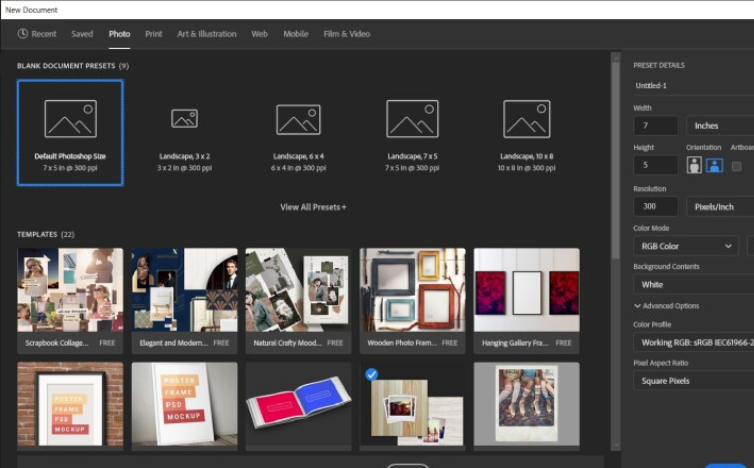
- After opening Photoshop, click on “New File” in the top left corner to start a new project.
Step 3: Set Your Dimensions and Start a New Project

- A new window will appear, prompting you to enter the dimensions for your project.
- Since you’re just getting started, you can stick with the default settings of 2473 x 1335 pixels at a resolution of 72.
- Click “Create” in the bottom right corner to proceed.
Step 4:Understand the Interface

- After selecting “Create,” you’ll see various panels and toolbars. Don’t worry; it’s not as complicated as it looks!
- The left side has the main toolbar with your commonly used tools.
- The right side features the layers panel, color picker, and adjustment options.
- The middle is your canvas, where you’ll do your work.
Step 5: Open a Photo or Generate with AI

- .

- To import a photo, you can drag and drop it onto the canvas or go to File > Open and choose an image from your computer.

- Photoshop now has a built-in AI image generator. To try it out, click “Generate Image” at the bottom of the canvas.
- This opens a new window where you can enter a custom prompt or choose one from the right for inspiration.
- Pick a prompt image, and it will automatically populate the prompt field. Choose your content type (such as Photo) and keep the default settings before clicking “Generate.”
- In just a few seconds, Photoshop will produce three detailed variations of the image!

Step 6: Move Your Image Around the Canvas

- The most common tool you’ll use is the Move Tool, which looks like four arrows and is located at the top of your toolbar. You can also use the shortcut key “V” to activate it. Use this tool to reposition your image on the canvas.
Step 7: Crop or Resize Your Image
.

- Select the The Crop Tool, which appears as two intersecting angles, allows you to select the area you wish to keep. Simply click and drag the edges or corners of the crop box over your desired section. Once you’re satisfied with your selection, press Enter or click the checkmark in the options bar to apply the crop.

- To resize your image for specific dimensions, navigate to Image > Image Size.

- To resize your image for specific dimensions, navigate to Image > Image Size.
Step 8: Modify the Brightness & Contrast

To adjust brightness and contrast, go to Image > Adjustments > Brightness/Contrast and use the sliders, then click OK. For a non-destructive method, click the half-filled circle icon in the Layers panel, select Brightness/Contrast, and adjust the sliders in the Properties panel. This creates a new layer that you can change later.
Step 9: Correct the Color

- For color correction:
- Click the half-circle icon in the Layers panel to add a Levels adjustment layer.

- In the Properties panel, use the gray eyedropper tool to click on a neutral gray object in your image to correct color casts.
Step 10: Remove Blemishes/Unwanted Spots

Choose the Spot Healing Brush Tool, which looks like a bandaid. Use the bracket keys “[” and “]” on your keyboard to adjust the brush size to slightly larger than the blemish. Click on the blemish in your photo, and Photoshop will blend it away. You might get a warning to rasterize the image before using the Spot Healing Brush, which will restrict your ability to edit text and vector shapes.
These steps cover the basics to get you started with Photoshop! It has many powerful tools, and while it might feel overwhelming at first, you’ll get better with practice. Don’t be discouraged if it takes time to learn—just keep using it!
And remember to save your work frequently to avoid losing anything important!
By following these steps, you can efficiently harness the capabilities of Adobe Photoshop’s AI tools to create visually stunning edits with ease.
See Also: 7 Best Free AI Tools For Image Resizing
Conclusion
The incorporation of AI tools into Adobe Photoshop has reinforced its position as an industry leader. For graphic designers, photographers, and creative professionals seeking powerful and efficient editing tools, Photoshop remains the go-to choice. Its ability to leverage AI for smarter and faster editing makes it an indispensable asset in any creative workflow.
For those ready to harness the power of AI-driven creativity, Adobe Photoshop is, without a doubt, unbeatable.
FAQs
How do Adobe Photoshop’s AI tools improve the editing process?
Adobe Photoshop’s AI tools enhance the editing process by automating complex tasks, offering precision and efficiency. AI-driven features like Content-Aware Fill, Neural Filters, and Sky Replacement allow users to complete edits more swiftly and with professional-quality results.
Are Adobe Photoshop’s AI tools difficult to use for beginners?
No, Adobe Photoshop’s AI tools are designed to be user-friendly and accessible to both beginners and experienced users. The intuitive interface and step-by-step guidance make it easier for newcomers to leverage powerful AI functions without a steep learning curve.
Can features in Adobe Photoshop be customized to fit specific creative needs?
Yes, many of Adobe Photoshop’s features offer customization options. Users can adjust parameters and settings to tailor effects to their specific creative visions, ensuring unique and personalized outcomes.
What are some unique AI tools exclusive to Adobe Photoshop?
Some exclusive AI tools in Adobe Photoshop include the Neural Filters and the AI-powered Sky Replacement feature. These tools leverage advanced algorithms to provide transformative and unique editing capabilities that are not typically found in other software.

